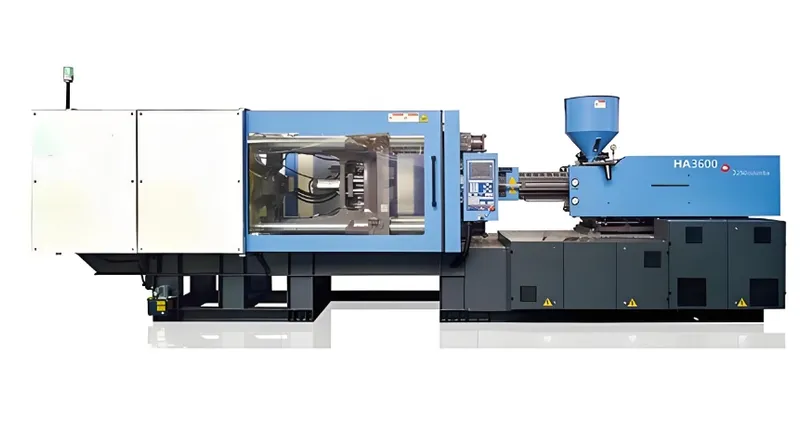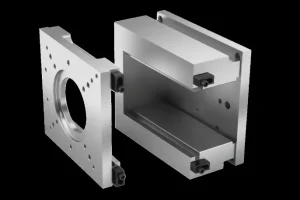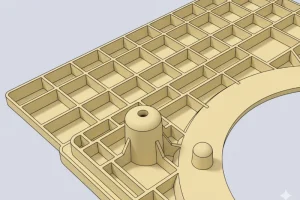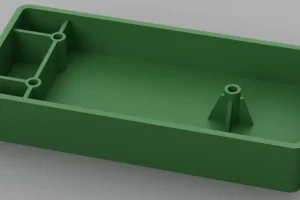Injection molding is a cornerstone of modern manufacturing, enabling the mass production of high-quality plastic parts with precision and efficiency. Among the various mold types, the two-plate injection molding machine1 stands out for its simplicity, cost-effectiveness, and versatility. This comprehensive guide explores the design, applications, technical details, and practical considerations of two-plate molds, providing valuable insights for engineers, manufacturers, and enthusiasts alike.
Two-plate injection molding machines use a mold with two main plates to produce plastic parts efficiently, making them a popular choice in industries like automotive, packaging, and consumer goods for their simplicity and cost benefits.
Whether you’re optimizing a production line or exploring molding technologies, understanding two-plate molds is essential. This article covers everything from basic principles to advanced applications, complete with tables, claims, and actionable guidance.
Two-plate molds are the most cost-effective option for high-volume production.True
Their simple design reduces manufacturing and maintenance costs, making them ideal for large-scale production.
Two-plate molds are suitable for all types of plastic parts.False
They have limitations in gate placement, making them less ideal for parts requiring aesthetic or functional gate locations.
What are Two-Plate Injection Molding Machines?
A two-plate injection molding machine utilizes a mold consisting of two primary components: the fixed side (A) and the movable side (B). These plates meet at a single parting line, where the mold splits to release the molded part. The runner system, which channels molten plastic into the mold cavity, is located on this parting line and is ejected with the part after cooling.

How They Work
The process involves:
-
Clamping: The mold closes, securing the fixed and movable sides.
-
Injection: Molten plastic is injected through the runner into the cavity.
-
Cooling: The plastic solidifies within the mold.
-
Ejection: The mold opens, and ejector pins remove the part and runner.
-
Separation: The runner is separated from the part in a secondary step.
Two-plate molds are widely used for their straightforward design, producing high-quality parts in industries requiring efficiency and scale, such as automotive and consumer goods manufacturing.

Why They Matter
Two-plate molds excel in high-volume production2 due to their lower cost and simpler construction compared to alternatives like three-plate molds or hot runner systems. Their design makes them ideal for parts where gate placement isn’t a critical concern, offering a balance of performance and affordability.
Two-plate molds simplify the injection molding process.True
With only one parting line and a basic runner system, they reduce complexity and production time.
What are the Key Features of Two-Plate Injection Molding Machines?
Two-plate molds are defined by their structure and operational principles, making them a staple in plastic manufacturing.
Two-plate molds feature a fixed and movable plate, a single parting line, and a cold runner system3, optimized for cost-effective production of simple to moderately complex parts.

Core Components
-
Fixed Side (A): Attached to the stationary platen, it houses the sprue and part of the runner system.
-
Movable Side (B): Connected to the moving platen, it includes ejector pins and the other half of the cavity.
-
Parting Line: The plane where the mold halves separate.
-
Runner System4: Channels molten plastic from the sprue to the cavity, solidified and ejected with the part.
Classification
| Perspective | Classification | Details |
|---|---|---|
| Process | Cold Runner System | Runner solidifies and is ejected with the part. |
| Materials | Thermoplastics (e.g., ABS, PP, PE, PC, PS, PA)5 | Compatible with a wide range of plastics. |
| Applications | High-Volume, Simple to Moderate Complexity | Suited for mass production of standard parts. |
Two-plate molds are limited to basic part designs.False
While simpler than other molds, they can produce moderately complex parts with proper design.
What are the Applications of Two-Plate Injection Molding Machines?
Two-plate molds are versatile, serving industries that prioritize efficiency and cost savings.
Two-plate injection molding6 is used in automotive, packaging, and consumer goods for producing lightweight, durable parts like containers, casings, and components.

Typical Uses
-
Automotive: Interior components, dashboards, and trim pieces.
-
Packaging: Bottle caps, containers, and trays.
-
Consumer Goods: Toys, electronic casings, and household items.
Pros and Cons vs. Other Molds
| Aspect | Two-Plate Mold | Three-Plate Mold |
|---|---|---|
| Cost | Lower initial and maintenance costs | Higher due to additional complexity |
| Complexity | Simple, single parting line | Complex, two parting lines |
| Gate Flexibility | Limited to parting line | Multiple gate options |
| Cycle Time | Faster, fewer steps | Slower, additional runner separation |
| Applications | High-volume, simpler parts | Complex parts with aesthetic requirements |
Two-plate molds outperform three-plate molds in every scenario.False
Three-plate molds offer greater gate flexibility, making them better for complex or aesthetic parts.
What is the Process of Two-Plate Injection Molding?
The two-plate molding process is a streamlined sequence that ensures precision and repeatability.
The two-plate injection molding process includes clamping, injection, cooling, ejection, and runner separation, producing parts efficiently for various industries.

Step-by-Step Breakdown
-
Clamping: The mold closes, applying force to withstand injection pressure.
-
Injection: Molten plastic fills the cavity via the runner system.
-
Cooling: The plastic solidifies, with cooling time varying by material and thickness.
-
Ejection: The mold opens, and ejector pins release the part and runner.
-
Separation: The runner is removed, often manually or mechanically.
Material Impact
Materials like ABS, PP, and PC affect the process:

-
Shrinkage: PP shrinks more than PC, requiring mold adjustments7.
-
Cooling Time: Thicker parts or high-shrinkage materials need longer cooling.
Material choice significantly impacts two-plate molding.True
Shrinkage and cooling properties of materials dictate mold design and cycle times.
What are the Practical Tools for Two-Plate Molding?
Effective use of two-plate molds requires careful design and decision-making.
Two-plate molding benefits from a design checklist8 and selection criteria to optimize part quality and production efficiency.

Design Checklist
-
Parting Line: Position to minimize visible marks.
-
Runner System: Design for balanced filling and minimal waste.
-
Ejector Pins: Place to avoid deformation or surface marks.
-
Cooling Channels: Ensure uniform cooling to prevent warping.
-
Shrinkage: Adjust for material-specific rates.
Decision-Making Criteria
| Use Two-Plate When | Consider Alternatives When |
|---|---|
| High-volume, cost-sensitive projects | Complex gate placement is needed |
| Simple gate location is acceptable | Aesthetic gate marks must be avoided |
| Standard thermoplastics are used | Multi-material or undercut parts |
Proper runner design reduces material waste in two-plate molds.True
Efficient runners minimize scrap, enhancing cost-effectiveness.
What are the Related Technologies?
Two-plate molding connects to a broader ecosystem of manufacturing processes.
Two-plate injection molding integrates with upstream mold design and downstream finishing processes, enhancing its role in production workflows.

-
Upstream: Mold design software (e.g., SolidWorks), material selection.
-
Downstream: Trimming, assembly, and decoration (e.g., painting).
-
Alternatives: Three-plate molds, hot runner systems, stack molds.
Two-plate molds are isolated from other technologies.False
They integrate with design tools and post-processing for a complete workflow.
Conclusion
Two-plate injection molding machines offer a practical, cost-effective solution for producing high-quality plastic parts. Their simplicity and efficiency make them ideal for high-volume applications, though they have limitations in gate flexibility. By leveraging the design checklist, understanding material impacts, and exploring related technologies, manufacturers can maximize their benefits.
-
Explore the benefits of two-plate injection molding machines to understand their impact on manufacturing efficiency and cost-effectiveness. ↩
-
Learn how high-volume production leverages two-plate molds for efficiency and cost savings in manufacturing processes. ↩
-
Discover the functionality and advantages of cold runner systems in injection molding, enhancing your understanding of mold design. ↩
-
Discover how a runner system functions to optimize the injection molding process and improve production efficiency. ↩
-
Learn about the diverse applications and properties of thermoplastics to enhance your material selection knowledge. ↩
-
Explore the benefits of two-plate injection molding to understand its efficiency and cost-effectiveness in manufacturing. ↩
-
Learn how mold adjustments can impact the quality and efficiency of injection molding, ensuring optimal production outcomes. ↩
-
Discover essential elements of a design checklist for injection molding to enhance part quality and streamline production. ↩











